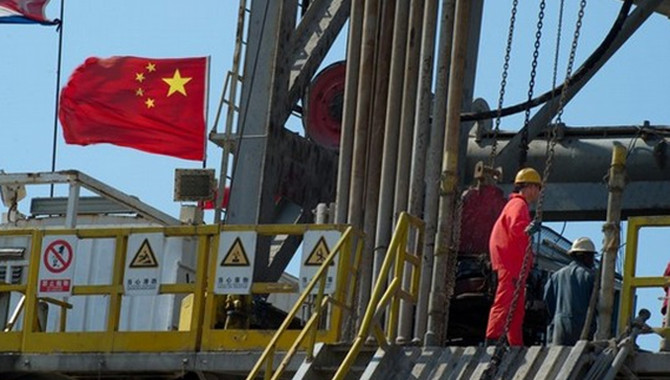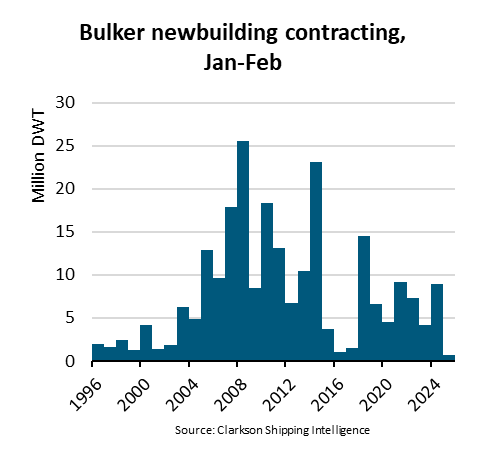
China’s crude stockpiles rose in February amid a decline in refinery throughput as refined product demand took a hit due to the coronavirus outbreak, while crude imports remained largely steady, according to trade flow analytics and market participants.
The rise in China’s crude inventories was largely opportunistic as economic activity struggled to recover after an extended Lunar New Year holiday. Whether stocks continue to build will depend on how much domestic fuel demand and refinery runs can bounce back.
Chinese refiners appear to have been pulling back on spot purchases in recent weeks, and lower volumes of oil-on-water suggest that the impact of the coronavirus outbreak on crude imports may not show until March and April.
As oil product demand fell, China’s total refinery throughput slumped by around 3.3 million b/d in February from the month before to just over 10 million b/d, an S&P Global Platts survey suggested. That’s close to a 25% month-on-month decline.
“Crude oil imports on the other hand show a different trend; overall there has been no reduction in oil imports since the start of the year, which is surprising,” Bernstein senior analyst Neil Beveridge said in a note this week. “While there was [a] pronounced 40% drop in oil imports in mid-February [around 4 million b/d], we have seen oil imports rebound since then. Data over the past few days indicates that oil imports are now back at 10 million b/d or 40% above where they were last year,” he added.
China’s crude oil imports averaged 10.16 million b/d over 2019 and 10.76 million b/d in December, data from General Administration of Customs showed. No official data was published for January, but Refinitiv estimated that China’s crude imports in January and February held up at around 10.69 million b/d and 10.53 million b/d, respectively.
STOCKPILING
“Given the decline in refining runs, this indicates that stockpiling is taking place ahead of an anticipated pickup in demand from refineries,” Beveridge said, adding that inventory data showed a 20 million-barrel increase since the start of this year.
“How sustainable this is, is not clear at this point, although the surprising takeaway is that China oil imports have been much less impacted so far than many investors may have expected,” he said.
Citigroup also estimated in mid-February that the coronavirus was driving up crude stockpiles in China.
Focusing only on the outbreak in China, crude stocks were expected to grow by 165 million barrels in Q1, Citigroup said, adding that stocks of gasoline were expected to grow by 13 million barrels, diesel by 15 million barrels and jet fuel by 5 million barrels.
As domestic and regional refined product storage fills up and crude processing rates drop, this shifted the onus of stock builds to crude oil, Citigroup noted.
“However, whether these crude stocks build at the refinery gate, at overwhelmed ports, or move more concertedly into commercial or strategic storage remains a question,” Citigroup said.
Earlier this month, Goldman Sachs said China was acting as a significant inventory-absorber despite a significant demand shock from the coronavirus.
The bank expected an increase in global oil inventory of 180 million barrels in the first half of 2020, which was four times its pre-virus forecast, half of which was accommodated by China with some surplus going to other emerging markets.
China has large spare crude storage capacity with satellite imagery pointing to 150 million barrels of ullage, with potential for more, while India, Russia and core OPEC producers have at least another 35 million barrels of spare storage capacity, Goldman Sachs said.
“If our base-case forecast plays out, it would once again highlight the new importance of China and emerging market storage helping smooth out demand and supply disruptions (like Iran in 2018, Abqaiq in 2019), effectively leaving oil prices less sensitive to shocks than a decade ago, even if shale producers fail to respond,” the bank added.
SPRING CHALLENGE
Once refineries restart or when storage runs out, depending on which comes earlier, the impact will flow through to international markets and trade flows.
When this happens, refineries will begin destocking and the oil surplus will begin ballooning across developed countries and floating storage, leading to a sharp decline in oil prices, Goldman Sachs said.
“Throughput in March is likely to recover to 80%-85% of normal level amid slow demand recovery,” a Beijing-based analyst said, adding that it takes time for Chinese refineries to digest their crude stocks.
Meanwhile, low crude prices continue to signal sluggish buying interest for spot cargoes.
The premium of the most popular spot crude, Russian ESPO, has been at the 18-month low of $2.05/b against Platts Dubai since February 26, which was less than half the $5.2/b premium assessed on January 28, Platts data showed.
Source:Platts
The opinions expressed herein are the author's and not necessarily those of The Xinde Marine News.
Please Contact Us at:
admin@xindemarine.com


 Ningbo Containerized Freight Index Weekly Commentar
Ningbo Containerized Freight Index Weekly Commentar  Ningbo Containerized Freight Index Weekly Commentar
Ningbo Containerized Freight Index Weekly Commentar  Ningbo Containerized Freight Index Weekly Commentar
Ningbo Containerized Freight Index Weekly Commentar  BIMCO Shipping Number of the Week: Bulker newbuildi
BIMCO Shipping Number of the Week: Bulker newbuildi  Ningbo Containerized Freight Index Weekly Commentar
Ningbo Containerized Freight Index Weekly Commentar  Ningbo Containerized Freight Index Weekly Commentar
Ningbo Containerized Freight Index Weekly Commentar